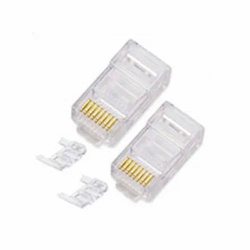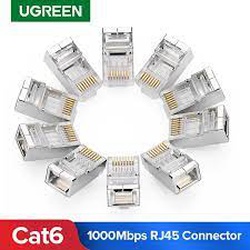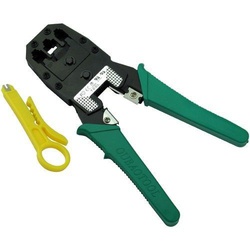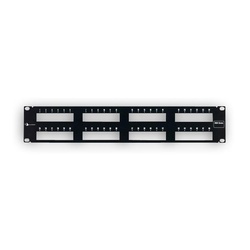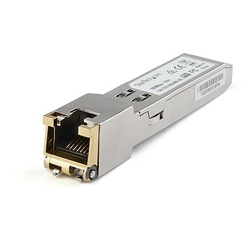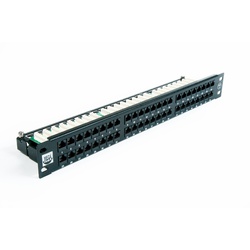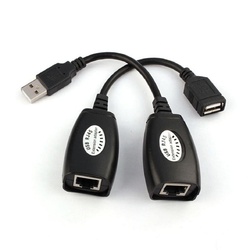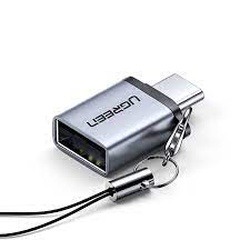
Rj45 Cat6A Connectors
RJ45 Cat6A connectors are commonly used in Ethernet networks to terminate twisted pair cables, specifically Cat6A cables. These connectors provide a reliable and high-performance solution for transmitting data at speeds up to 10 Gigabit Ethernet (10GbE) over a distance of up to 100 meters.
- Physical Design: The RJ45 Cat6A connector resembles a small rectangular plug with eight pins arranged in a staggered configuration. It typically has a plastic body that houses the pins and protects the internal wiring.
- Compatibility: Cat6A connectors are backward compatible with lower category cables, such as Cat5e and Cat6. However, to achieve the full capabilities of Cat6A cables, it is important to use Cat6A connectors.
- Pin Configuration: The eight pins inside the connector are designed to match the corresponding wires in the Cat6A cable. The pins are usually gold-plated to ensure good conductivity and reduce the risk of corrosion.
- Performance: Cat6A connectors are specifically designed to handle the higher bandwidth and frequencies required for 10GbE transmissions. They have improved crosstalk and noise cancellation characteristics compared to earlier connector types, which allows for better signal integrity and higher data transfer rates.
| SKU | 1287 |
|---|
Reviews
Description
Rj45 Cat6A Connectors
RJ45 Cat6A connectors are a type of modular connectors used for terminating Ethernet cables that are designed to support Cat6A (Category 6A) cabling standards. These connectors are widely used in networking and telecommunications applications to provide reliable and high-speed data transmission.
Features
-
Size and Shape: RJ45 Cat6A connectors have a rectangular shape and are similar in appearance to RJ11 or RJ45 connectors used for telephone and Ethernet connections. They typically measure about 12.25 mm in width and 11.68 mm in height.
-
Pins and Contacts: These connectors have eight pins or conductors arranged in a row. Each pin is designed to make electrical contact with the corresponding pins in the RJ45 jack or socket. The pins are often gold-plated to enhance conductivity and minimize corrosion.
-
Wiring Configuration: The pins inside the RJ45 Cat6A connector follow a specific wiring configuration known as the T568A or T568B standard. This standard ensures that the transmit and receive pairs are properly aligned for data transmission.
-
Shielding: Cat6A connectors are typically designed with an internal shielding system to provide better protection against electromagnetic interference (EMI) and crosstalk. This shielding helps to maintain signal integrity and prevent data loss or degradation.
-
Cable Compatibility: RJ45 Cat6A connectors are specifically designed to accommodate Cat6A cables, which are capable of transmitting data at speeds of up to 10 Gigabits per second (Gbps) over distances of up to 100 meters. These connectors may also be compatible with lower-grade cables like Cat6 or Cat5e, but they will not provide the full performance benefits of Cat6A.
-
Termination Process: To terminate an RJ45 Cat6A connector, the individual conductors within the Ethernet cable are stripped, untwisted, and then inserted into the corresponding slots or channels within the connector. The connector is then crimped or pressed down to secure the conductors in place and establish a reliable connection.
Overall, RJ45 Cat6A connectors are essential components in high-speed networking installations where reliable and fast data transmission is required. They provide a standardized and efficient means of connecting Ethernet cables to networking devices such as switches, routers, and computers.

